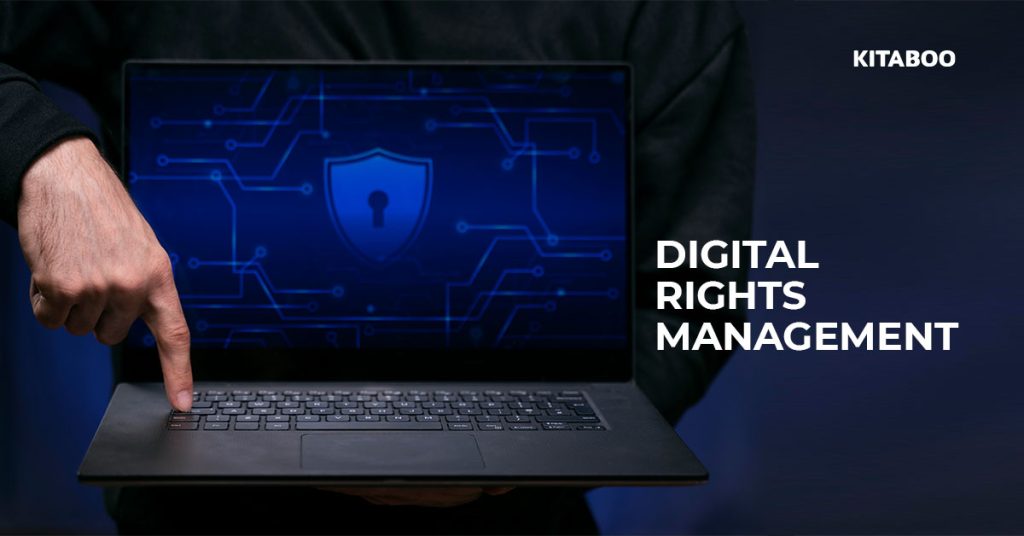
Understanding DRM Protection in White Label eBook Platforms for K12 Publishers
Summarize this blog with your favorite AI:
With eBooks gaining immense popularity, the digital revolution has significantly transformed the K12 publishing industry. However, with the ease of digital distribution comes the challenge of protecting copyrighted content. This is where DRM (Digital Rights Management) protection plays a crucial role. In this blog, we will delve into the significance of DRM protection for K12 publishers via white labeled eBook platforms and highlight the advantages of using KITABOO, a trusted white label digital textbook platform.
Table of Contents
What is DRM Protection?
Digital Rights Management (DRM) refers to the technology and set of protocols used to protect and manage intellectual property rights for digital content, such as eBooks, textbooks and so on. DRM protection ensures that only authorized users can access, read, and distribute eBooks while preventing unauthorized copying, sharing, and piracy. It acts as a safeguard against copyright infringement and ensures content creators and publishers retain control over their digital assets.
Why Your White Labeled eBook Platform Should Use DRM Protection
Copyright Protection
DRM protection safeguards the rights of content creators and K12 publishers by preventing unauthorized distribution and piracy of their works.
Secure Distribution
DRM technology enables secure distribution of eBooks, ensuring that they can only be accessed by authorized individuals or devices, reducing the risk of piracy and illegal sharing.
Controlled Access
DRM protection allows publishers to set specific access restrictions, such as limited-time access or authorized device limits, thereby increasing control over the way their eBooks are used and distributed.
Monetization Opportunities
DRM protection enables K12 publishers to implement various business models, such as subscription-based access or pay-per-view, to generate revenue from their eBooks.
Student Engagement
With DRM protection in place, students can confidently access eBooks, knowing that their privacy and security are maintained. They can also rest assured that they have access to the latest, most authentic content, that hasn’t been tampered with.
How DRM Protection Works
DRM protection involves a combination of encryption, licensing, and authentication mechanisms. Here’s a simplified overview of the processes that could be involved with the DRM system you choose:
Encryption
eBooks are encrypted using a unique algorithm, making it difficult for unauthorized users to access the content without the necessary decryption key. This ensures that only authorized users access the content.
Licensing
DRM systems can generate licenses that contain information about the authorized user or device, access permissions, and usage restrictions. Any institution or student without the required licensing, will not be able to access the content.
Authentication
When a user attempts to access an encrypted eBook, the DRM system verifies the license and grants access only if the user meets the specified criteria.
Monitoring and Enforcement
DRM systems continuously monitor eBook usage to detect and prevent unauthorized copying, sharing, or distribution. They can also revoke licenses if necessary.
Introducing KITABOO: A Trusted White Labeled eBook Platform
KITABOO is a leading white labeled eBook platform that offers robust DRM protection along with a range of powerful features for K12 content publishing. Some of its key features include:
Secure Content Distribution
With 128-bit encryption, KITABOO ensures the secure delivery and distribution of K12 eBooks, protecting educational content from unauthorized access or piracy.
Customizable DRM Settings
KITABOO allows publishers to set granular access controls, such as expiry dates, offline access, and limited device activations, based on their specific requirements.
Multi-Platform Compatibility
KITABOO supports various platforms, including web, iOS, and Android, enabling the K12 community to access eBooks on their preferred devices.
Analytics and Reporting
KITABOO provides detailed analytics and reporting tools to track eBook usage, user engagement, and identify popular content.
User-Friendly Interface
KITABOO offers an intuitive and user-friendly interface for students, ensuring a seamless and enjoyable reading experience.
Conclusion
DRM protection plays a vital role in white labeled eBook platforms for K12 content. It safeguards copyrighted content and enables secure distribution. By implementing DRM technology, K12 publishers can protect their intellectual property, explore diverse revenue models, and engage students effectively.
KITABOO emerges as a reliable white labeled eBook platform that offers robust DRM protection, customizable access controls, and a user-friendly interface, making it an ideal choice for K12 publishers.
Embrace DRM protection in your eBook platform to ensure the integrity of your content and foster a thriving digital publishing ecosystem. To get started, schedule a demo call with us today!
Discover how a mobile-first training platform can help your organization.
KITABOO is a cloud-based platform to create, deliver & track mobile-first interactive training content.

![Top 5 Free Publishing Sites for Independent Publishing [2026]](https://kitaboo.com/wp-content/uploads/2025/09/Top-5-Free-Publishing-Sites-for-Independent-Publishing-2026-420x235.webp)
